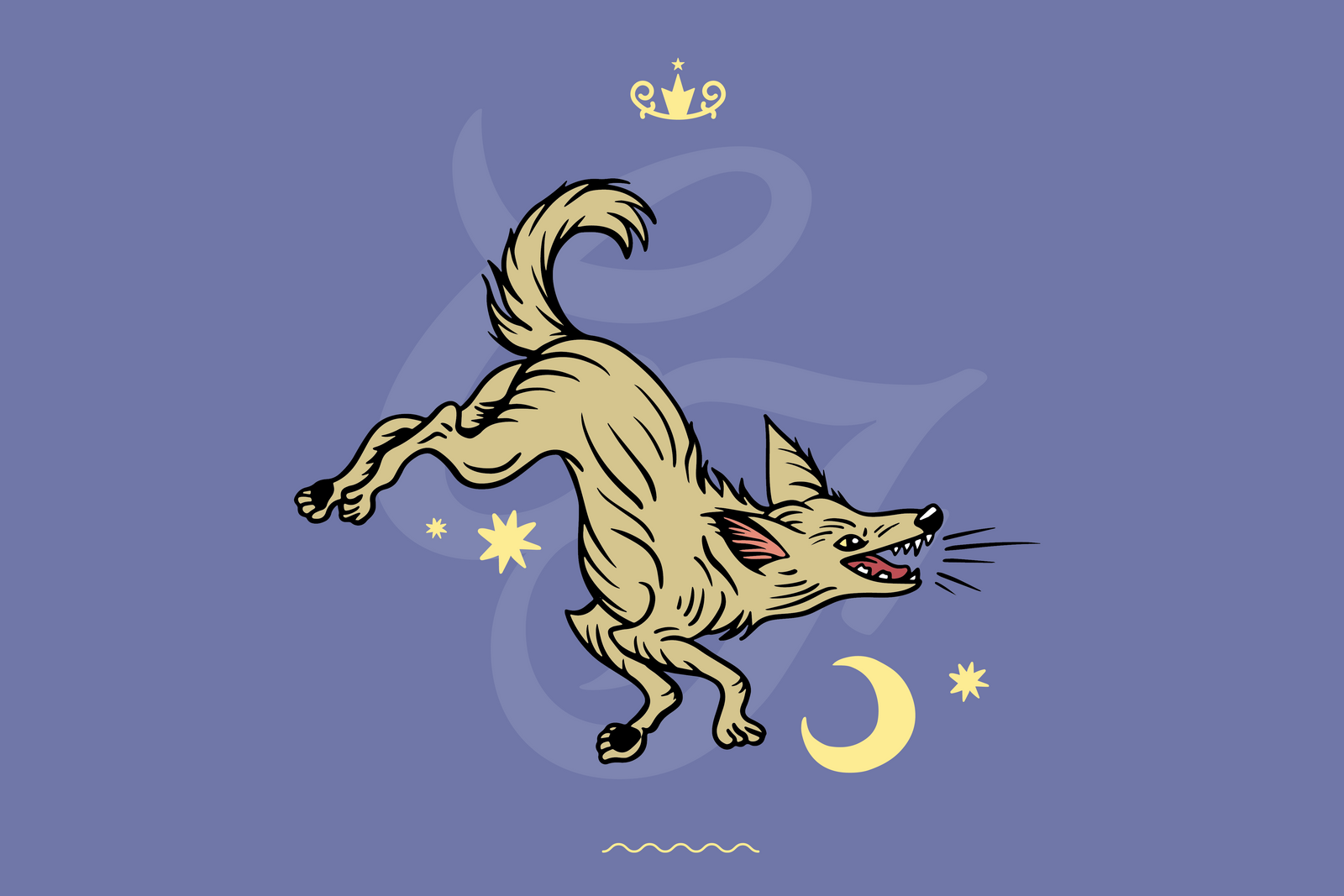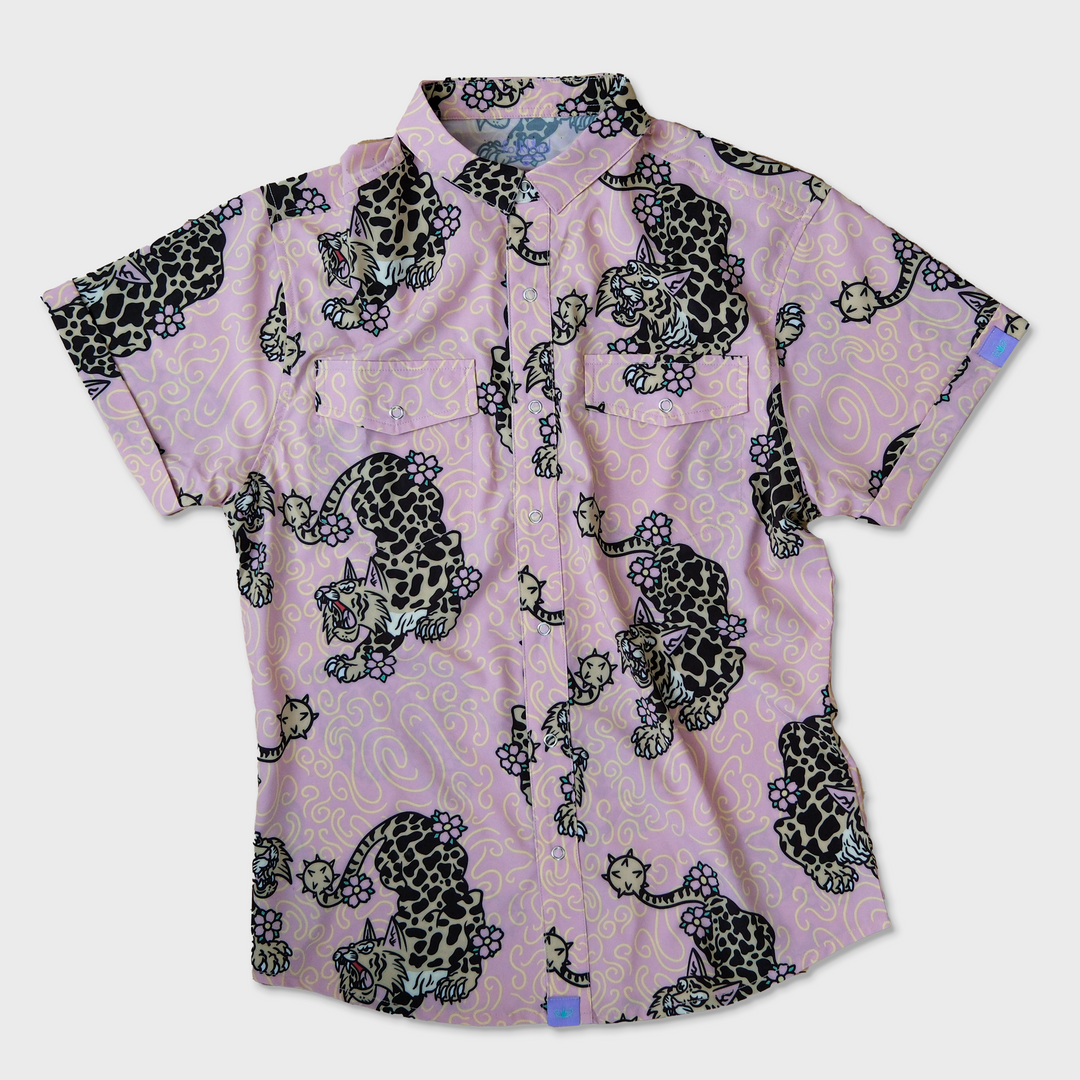COYOTE

It’s a new year! A time of rejuvenation, rebirth, reinvention. So, this month’s Creature Feature is of course… the coyote? Let’s discuss.
We may think of the coyote as a mangy dog, a pest, a goofball trying to catch a roadrunner, or Johnny Cash accompanying Homer Simpson on a vision quest after consuming a spicy pepper. But capital-C Coyote features heavily across mythology of indigenous North American tribes. For centuries, they spun yarns of an anthropomorphic coyote-man who generally was present at the dawn of time. From there, however, depending on the tribe, tales diverged quite significantly. Like, sometimes the coyote was a raven.
Typically though, Coyote is a divine being with creative, supernatural and spiritual powers. Then in some myths, he’s a malevolent trickster deity. And in others, he’s both, because who doesn’t mind a hat on a hat? He’s often paired with a more head-honcho figure—like the Maidu people’s Earth Maker—and has a hand (or paw?) in the dawn of humanity. While that seems rather altruistic and harmless, things tend to go south when Coyote inevitably proposes that evil be introduced to the oven-fresh Earth. Sometimes, he’s among many animals as the world’s first inhabitants. The Miwok people believe Coyote met with his brethren to plan the creation of humans. Every animal thought the new creatures should be imbued with his or her own best characteristics. They even created models of them, like a show-and-tell project, but for humanity. But Coyote thwarted their plans by squashing everyone’s figurines and creating humanity in his own image instead. Kind of explains a lot, right?
Don’t worry: Coyote’s not all bad. Many Native myths, including a Shasta legend, has him stealing the sun from selfish gods to benefit humans. What’s intriguing about this is a certain Greek god named Prometheus also stole the sun in similar fashion. So did Loki in Scandinavia. West African folk hero Anansi did the same for his people. Aztec god Tezcatlipoca often disguised himself as a Coyote to aid endangered travelers. In Japanese and Western European mythology, foxes—coyotes’ cute cousins—feature in countless tales. As with Coyote’s many facets, his story seems to have been tumbled and mixed into a cultural macédoine throughout time and space. So, why a coyote?
French anthropologist Claude Lévi-Strauss suggests coyotes represent a sort of mediation between life and death, our plane of existence and the unknown. Nothingness and life itself. Throughout history, civilizations have placed the burden and blame of their own human shortcomings, imperfections and derelictions on this elusive and curious creature. Because after all, there had to be some explanation of why we are the way we are. On the other hand, we can’t seem to get away from our seemingly kindred canine spirit. Paraphrasing Johnny Cash (by way of Nine Inch Nails) maybe Coyote is the way we hurt ourselves to see if we can still feel. “What have I become?” he sings. “My sweetest friend.” Perhaps to fully understand the intentions and meaning of this animal deity, and by extent humanity, we simply need to follow the teachings of Wile E. Coyote: paint a big black hole on the side of a cliff, then step through.
See you out there.































